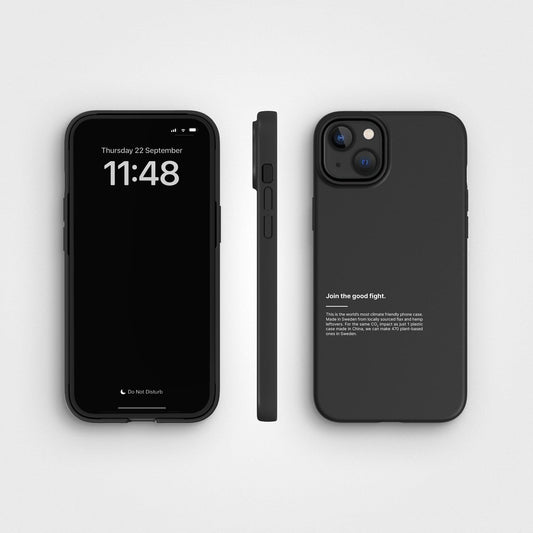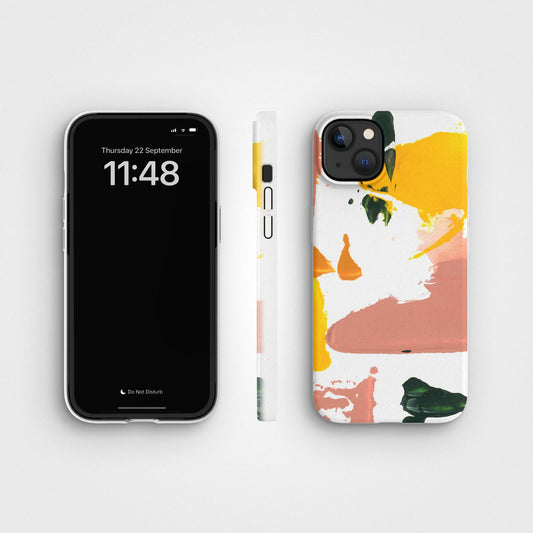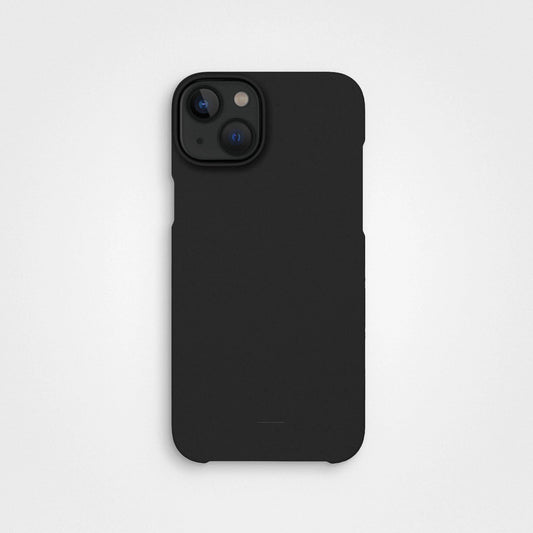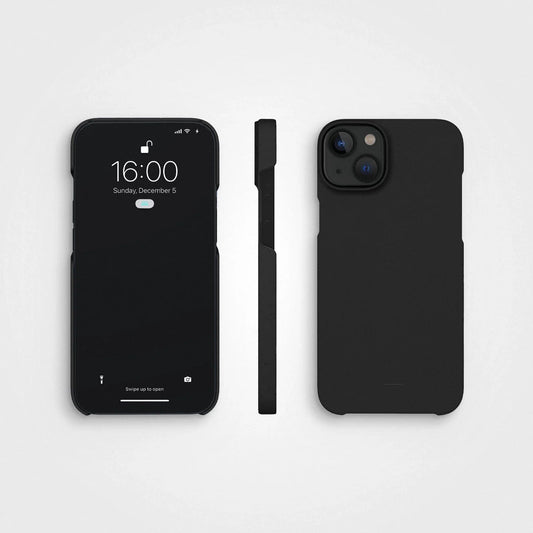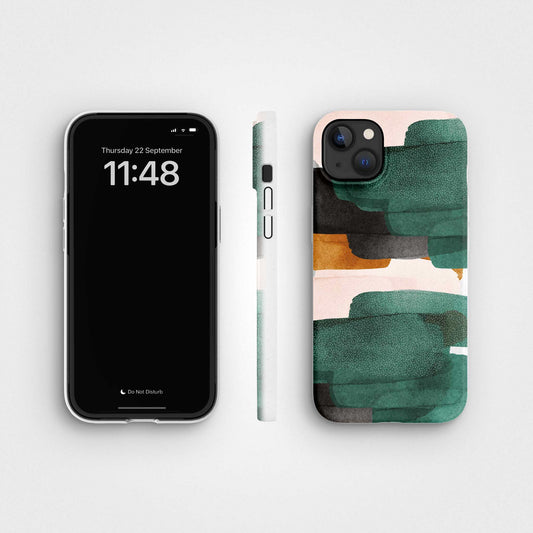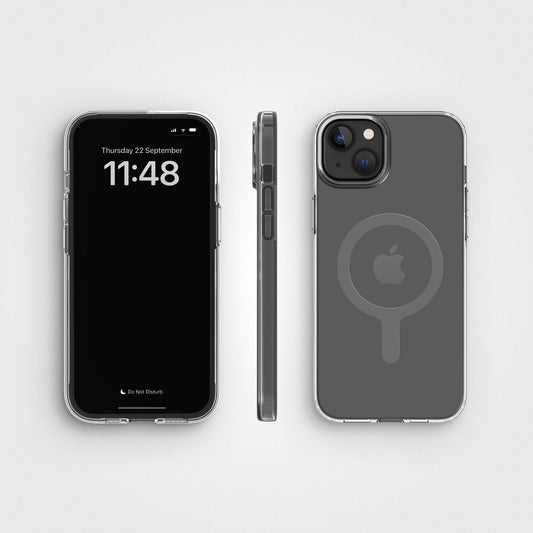470 plant-based agood mobile cases produce the same emissions as 1 plastic case.
Choose a plant-based phone case from agood company.
If you are coming from our jaw-dropping ads you may have seen us saying, it's not ideal, right?
We expected a few of you to have some questions.
In today's world, full of environmental problems, where planet awareness is important, even the seemingly small decisions, such as choosing a phone case, hold significant weight. Among multiple options available, our company has taken a firm stance in favor of the planet. Here's an intriguing revelation: the pollution generated by producing just one plastic case equates to that generated by crafting around 470 plant-based phone cases. So, when it's time to select your phone case, consider choosing one from an environmentally conscious company.
What's not ideal about other brands you may ask? Given a startup from Sweden could do it, we can’t really wrap our heads around why other companies aren't developing eco conscious products with the same enthusiam as us.
That's why we’ve chosen to pick a fight. With everything standing in between us and inaction. We want to show the world why eco-friendly phone cases are the best option. After reading this, we are sure you will join the (agood) fight against products which don't consider the plant as much as they could.
What is agood company mobile case?
This eco-friendly mobile phone case, made in Sweden, weighs just 20 grams (0.04 pounds) and offers 2-meter drop protection. Crafted from a blend of materials such as hemp, flax, cellulose, and PLA as well as Bio PBAT, it has a carbon emission of 0.102 kg of CO2. Packaged in a recycled cardboard box certified by FSC, the case is produced in a sustainable factory. When it's time to dispose of it, you can return the case for recycling through the agood loop™ program.
Join Us in Making a Difference: With your support, we're striving to offer education to 10,000 girls through the agood company ◣ Malala Fund partnership.
We believe our winning fight is that 1 plastic case produces the same amount of CO2 emissions as 470 of our plant-based cases.
So, how did we come up with this number?
In order to complete a full life cycle analysis of our phone cases we had to look at all the emissions during our mobile case production and end of emission life, together with our partners. We then compared this with the plastic phone case production, as most plastic phone cases are produced in China we collected our data based on this.
We are of course not doing this calculation ourselves. We hired ClimatePartner, a CO2 consultant, that looked into our products and their full life cycle. Let’s breakdown those numbers and take a closer look.

We partnered with ClimatePartner to assess the carbon emissions of plant-based phone case using the Greenhouse Gas Protocol Product Life Cycle Accounting and Reporting Standard (GHG Protocol). The study considered emissions from raw material extraction, packaging, production, supply to the customer's location, and disposal. The focus was on controllable processes, excluding emissions during product use.
Data was primarily collected, supplemented by reputable sources when necessary. Emission factors from databases like ecoinvent and GEMIS were used, with all greenhouse gases converted to carbon dioxide equivalents (CO₂e) for clarity. Also, indirect emissions related to production, like employee commuting, were included.

- We assumed that the plastic used is non-compostable and is produced using fossil fuels.
- Each plastic case weighs around 21 grams, therefore we used this in our calculations to find the exact emission for one plastic case.
- From there, it was only a simple calculation to work out how many mobile cases it would take for us to total the same amount of emissions as just ONE plastic case.
470
There you have it, our argument for why we are picking a fight with those brands who aren't showing action and to show proof that consuming sustainably can make a change.
Want to dig deeper?
We know that some of you will want to learn a bit more about where these figures came from, so enjoy us digging a bit deeper into the statistics.
When looking at the data you can make a general assumption between production in China and Sweden. If we assume that machines and processes are equivalent from an energy perspective (i.e. in Sweden we have energy-efficient production) and production is down to how much CO2 emissions each kWh emits.
1. First, let's look at the electricity mix.
There is accurate data and statistics to show that the Swedish electricity mix gives 13g CO2 /kWh, while the Chinese electricity mix is around 700g CO2/kWh. This shows that Chinese plastic production emits 50 times more CO2 emissions than Swedish production.
2. Next up is shipping, the biggest CO2 emission plastic cases give off.
To gather this data, we based it on a DHL journey from Guangdong, China to Arlanda, Stockholm. We are being a bit nicer here and are only taking about half of the emissions which come from air freight. When you compare this to our shipping emissions, which is 0, it's a pretty scary difference. We use climate-compensated shipping, don’t ship products by air freight, and produce locally in Sweden.
Our production partner calculated that they consume around 4 kWh per processed kg of plastic at their plant, this, therefore, corresponds to 52 CO2 per kg of plastic. For a Chinese factory, it would be 2.8 CO2 per kg of plastic. This was calculated by using our partners energy consumption data and both the countries electricity mix data.
3. The next thing we looked into was the influence of the choice of plastic.
The type of plastic used matters when it comes to pollution. Different plastics have different impacts. While regular cases often use plastic that's not great for the planet, we're all about a greener alternative.
If you produce a phone case with fossil PP (polypropylene), the production of the material will emit 2 kg CO2 / kg plastic. Producing with trifilon will be CO2-neutral (regenerated/recycled plastic is also closer to 0). In this case, we assume the plastic used for most plastic cases is fossil PP, therefore the production of one phone case produced with fossil PP emits 0.042 CO2/kg, as each case is 21 grams. A Good Mobile Case when produced is CO2 neutral, as the manufacturing plant runs on solar power in summer and switches to hydroelectricity in winter, as well as creating a closed system for wastewater.

Let's look at the afterlife of the product, this is one of the biggest arguments why plastic phone cases are far from ideal.
As we assume that the plastic used is fossil-based PP and therefore cannot be recycled and is instead burnt. Rise calculated that 1 kg of plastic emits 2 kg of CO2 when burnt. So, when converting that into the weight of one case (21 grams), it totals 0.042 CO2/kg. Moreover, phone cases made with blended plastic take up to 500 years to decompose.
What happens to cases after they've served their purpose is super important. Users are often not sure what to do with used mobile cases. Regular plastic cases usually end up burned or take forever to break down. Our cases, on the other hand, are 100% circular, meaning that if you return a used case to us, we recycle it into something new and it leaves zero extra pollution behind.

Welcome to our agood loop program, here you can see the lifecycle of our mobile case. No landfill, no waste, and no emissions.
We steer clear of mixing various plastics, simplifying the recycling process for us when it's time for a case upgrade. All returned cases are collected and sent to our manufacturing partner, the mobile case factory, which expertly grinds them into pellets. These pellets can be seamlessly blended with fresh materials to create entirely new phone cases.
What's truly remarkable is that we can repeat this cycle multiple times, up to a remarkable 7 iterations.

There you have it.
Our reasoning behind how we can produce 470 mobile cases for the same amount of emissions as just one plastic case.
I hope all of you plastic case users are thinking that this isn’t so ideal right?


